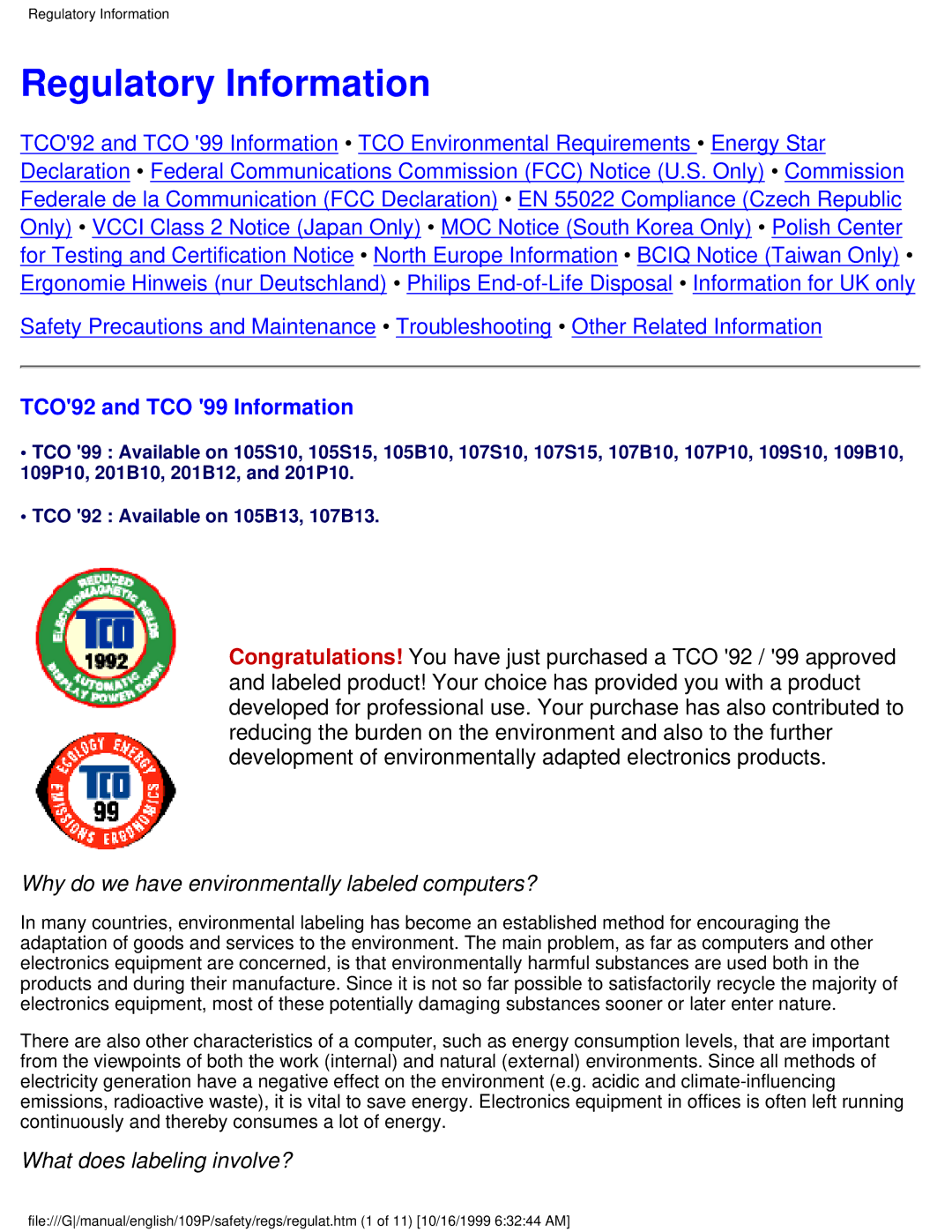109P specifications
The Philips 109P is a notable monitor that has made its mark in the realm of display technologies. As a part of Philips' robust lineup, the 109P is particularly known for its solid build quality and reliable performance, making it an attractive option for both professional and casual users.One of the standout features of the Philips 109P is its CRT (cathode ray tube) display technology, which was widely used before the advent of LCD and LED screens. This monitor provides vibrant colors and deep contrast ratios, delivering a visually appealing experience. The CRT technology allows for excellent color reproduction and smooth gradients, which is particularly beneficial for graphic designers and photographers who require accurate color representation.
The Philips 109P features a 19-inch screen size, which strikes a balance between desktop space usage and viewing comfort. The display has a resolution of 1280 x 1024 pixels, allowing users to enjoy a decent amount of detail for various applications, from office work to multimedia consumption. Additionally, the monitor supports a refresh rate of up to 85 Hz, which minimizes flicker and enhances stability during prolonged use.
Another characteristic of the Philips 109P is its versatile adjustability. The monitor supports tilt adjustments, enabling users to customize the viewing angle according to their preferences. This ergonomic design is complemented by its anti-glare screen coating, which reduces reflections and improves visibility in brightly lit environments.
Connectivity is another strong suit of the Philips 109P. It typically includes a range of input options, most notably the VGA connector, allowing it to connect to a variety of computers and devices. This makes it a compatible choice for users with older PCs or those looking to utilize it in specific industrial settings.
Durability is a hallmark of the Philips brand, and the 109P is no exception. Built to withstand the rigors of daily use, it features a sturdy chassis that can endure the wear and tear common in an office environment. This longevity makes it an appealing investment for businesses and individuals looking for a dependable monitor.
In conclusion, the Philips 109P combines classic CRT technology with essential features that cater to a wide range of users. With its solid performance, vibrant display, and practical design, the Philips 109P remains a noteworthy model for those who appreciate reliability in their computing experience. While newer technologies have emerged, the 109P stands as a testament to the enduring quality and craftsmanship that Philips has historically offered in the display market.

